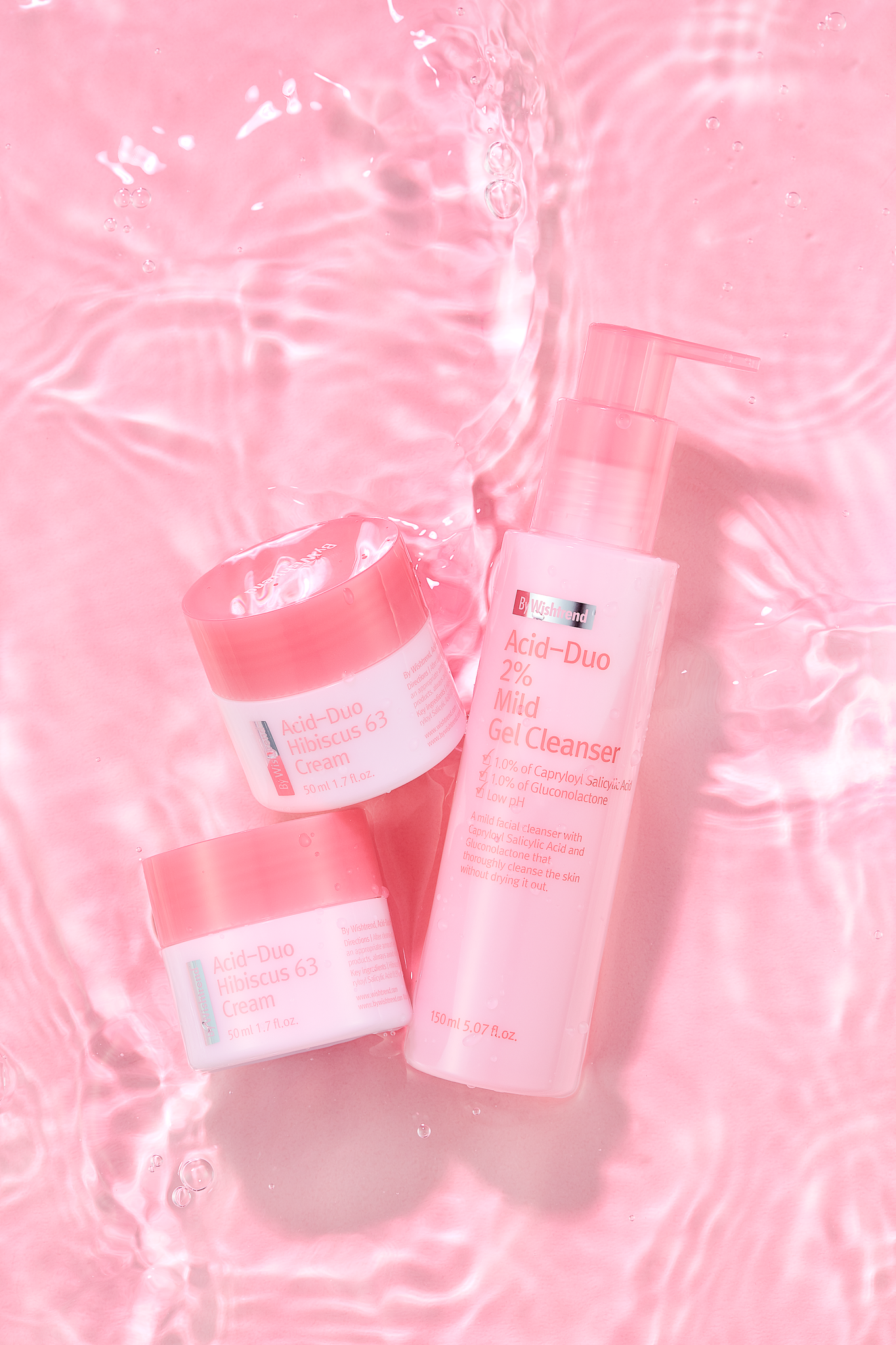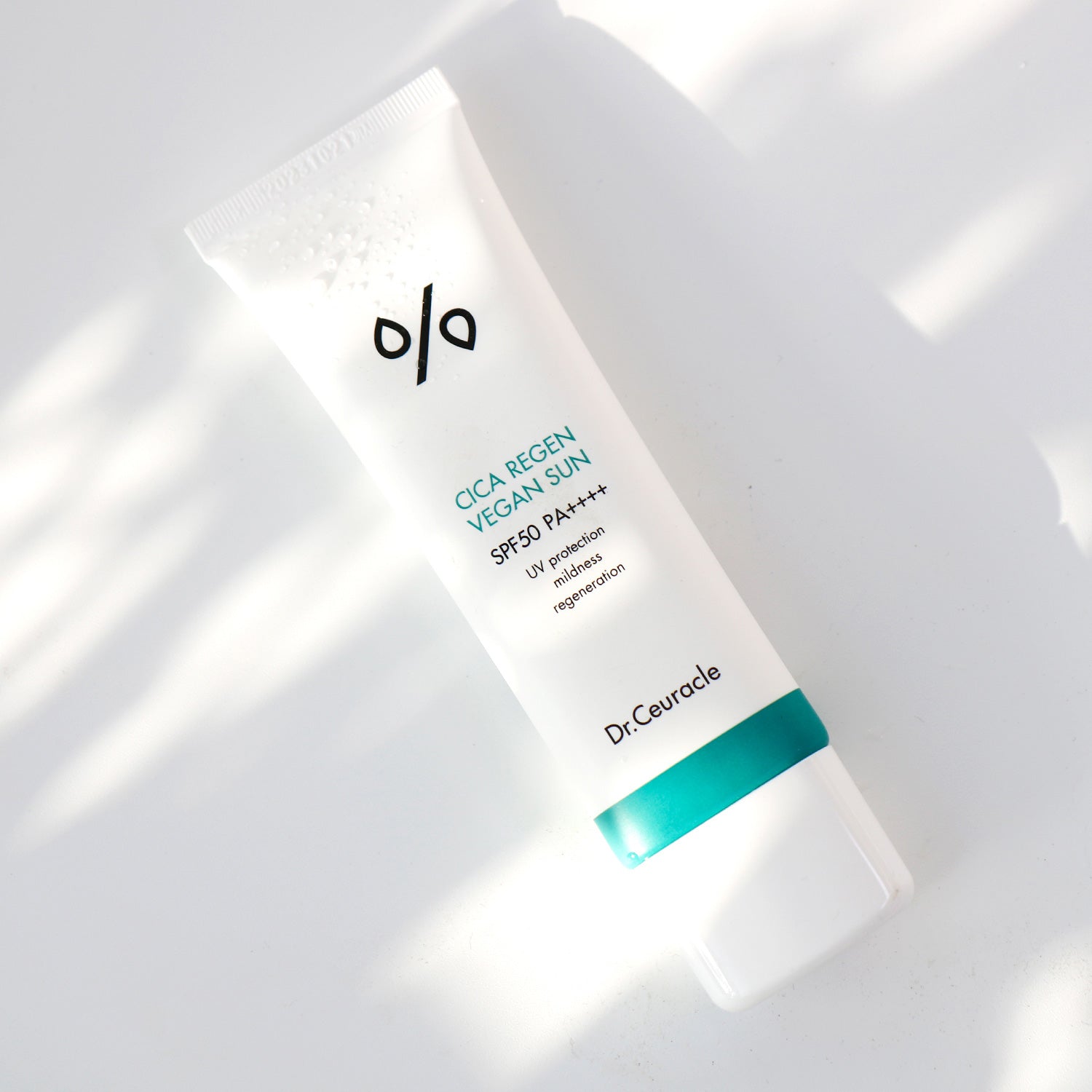
Acid-School!
September marks the beginning of autumn for most of us and we are preparing for cozy and a little darker days! Just as the days get darker, many people start to welcome a little more active ingredients such as exfoliated acids to the skin care routine again and pick them back after the summer routine.
We thought it was appropriate more a small concise acid school where we explain why exfoliation is important, the difference between different acids, what type of acid suits which skin type and skin condition and what is important to keep in mind when exfoliating for an optimal result !
Why should we exfoliate the skin?
Our skin cells are formed in the lower layer of the epidermis and the upper skin layer (horn layer) consists of dead skin cells. The cells migrate towards the skin surface and become increasingly hard to eventually be pushed away and off the skin surface. This process is called desquamation. Our skin forms and rejects millions of cells every day. The purpose of natural exfoliation is to keep the skin's protective barrier intact.
On average, cell renewal takes about 28 days in middle age and becomes slower with age. This makes it harder for the skin to get rid of old skin cells. You often experience that you get a duller skin and that products can not work in the same way. We may also find that we get congestion more easily.
Using an exfoliation stimulates cell renewal faster than the skin itself can and through this we can get improved radiance and a softer skin surface and that our remaining products can afterwards penetrate deeper into the skin and work better.
Tips to keep in mind when exfoliating with acid!
1. Get used to the skin - Regardless of whether you have paused the acids from the summer routine or never used it before, it is always best to gently get the skin used to the product again.
2. Adapt the acid to your skin type and skin condition - If you are sensitive, it may be a good idea to choose a milder alternative such as PHA acid with larger molecules that reduces the risk of irritation in the skin.
3. Do not overexfoliate the skin - Be careful not to overexfoliate the skin, this will cause a damaged skin barrier and you must work soothingly and try to repair the skin again. Simply start on box 1 again.
4. Moisturize & use spf - Moisturizing the skin is always good. For example, if you have added a BHA acid that is a little dehydrating, it can be good to add a moisturizing toner afterwards or apply a wonderful moisturizing mask to optimize the moisture level in the skin.
We always recommend the use of spf during the day when using acids. The skin usually becomes more sensitive to light and it is easier to trigger pigmentation. Sunscreen is a must and should be used all year round even if you do not use acids.
5. Do not mix acids from different brands - Mixing acids from different brands is something we do not recommend as the pH value in the products can collide. If you want to use different acids, you can of course use it, but then in separate routines and distribute them during the week.
AHA acid
AHA acid is a water-soluble acid that has the collective name Alpha hydroxy acid.
These acids are extracted through fruits, milk and sugar cane and there are different kinds of acids that work different depths and powerfully into the skin. AHA acid exfoliates the skin and helps stimulate the skin's cell renewal. Because this acid is water-soluble, it does not have as dehydrating effect on the skin as a BHA acid, but it softens and works well on the structure.
It is mainly suitable for skin that wants to work on lines and wrinkles, reduce scars and uneven skin structure and get radiance in the skin. The acid is also good for working on visible pigmentation and for maintaining an even clear skin tone.
Within AHA acids, there are a number of different acids that have different sized molecular sizes, which means that they can penetrate different depths into the skin and work differently vigorously. The one with the smallest molecule size can work deepest into the skin while the one with the larger molecule size works more superficially and is not a little powerful, which can suit a more sensitive skin better. Below we list some acids that belong to the aha family.
Glycolic Acid: Glycolic acid has the reduced molecule of all AHA acids and is thus the more powerful variant that can penetrate deeper. The glycolic acid is produced via sugar cane and can also be produced synthetically. This acid works well on structure, lines and wrinkles by effectively removing dead skin cells and increasing cell renewal. It is also suitable for someone who wants to work on pigmentation and also acne. It is also good for thickening the stratum corneum on the skin which can be caused by excessive sun exposure and is otherwise called actinic keratosis.
One product that contains Glycolic Acid is AHA 7 Whitehead Power Liquid - GLOWiD. It exfoliates effectively and works well on structure and has an illuminating effect. Glycolic acid is well suited for a slightly more durable skin that wants to work on lines, smoothing and on structure.
AHA / BHA Clarifying Treatment Toner - GLOWiD Is a toner that contains both AHA acid and BHA which gives the opportunity to use the property of two acids in one and the same product. It works well on the structure and is anti-inflammatory and helps keep the skin balanced.
Lactic Acid: This acid is produced from acidic dairy products such as yogurt and cheese but also fermented vegetables and fruits and is milder than the previous glycolic acid. Lactic acid belongs to a group called NMF, which is an abbreviation for natural moisturizing factors. It can simply be said that it is a group of substances that have an ability to bind water in the skin and moisture. Another known one is the hyaluronic acid that many people know.
The lactic acid has a emollient, evens out and works well on pigmentations. The acid works well on lines and also has antibacterial properties.
Mandelic acid: The acid is produced from bitter almonds and also as malic acid has a larger molecular size, which is suitable for more sensitive skin types. The mandelic acid has antibacterial properties and is also suitable for acne-prone skin. It is also good for treating dry skin and also working on pigmentation and wrinkles.
By Wishtrend Mandelic Acid 5% Skin Prep Water - GLOWiD contains mandelic acid and is great for a slightly more sensitive skin. It works in mixed hormonal acne and helps to balance the skin with its anti-inflammatory properties.
BHA acid
The BHA acid has the salmon name beta-hydroxy acid and, unlike the AHA acid, is oil-soluble. This means that the acid can thus penetrate deeper into the skin and pores and more easily dissolve sebum and dead skin cells. This is suitable for oily skin that may experience problems with clogged pores and acne. Salicylic acid is the name you usually hear when talking about BHA acid and is a popular ingredient in many products that are aimed at deep cleansing and keeping the skin in balance. The acid also has anti-inflammatory properties and reduces inflammation in the skin and can thus soothe active blemishes in the skin but also prevent new inflammations and outbreaks from occurring.
The acid is suitable, among other things, if you want to work balancing the skin, blackheads and patches.
Tea Tree Purifine 70 Toner
Is a toner fits nicely with a slightly more sensitive skin that, for example, experiences hormonal imbalance with patches by exfoliating and also soothing the skin.
5α Control Clearing Cleansing Foam
Is a deep cleansing cleanser that also contains salicylic acid which exfoliates and works effectively against impurities and pimples.
PHA Syra
PHA is simply explained as a milder version of AHA as the molecules are much larger and more slowly sink into the skin and therefore less irritating. This ingredient is very suitable for a skin that is dry and sensitive. Like AHA, PHA is water-soluble and skin rejuvenating for a smoother skin surface. Examples of PHA acids are Gluconolactone, Lactobionic Acid.
Acid-duo 2% Mild Gel Cleanser
Contains pha acid and is a nice exfoliating cleanser that suits someone who is a little more sensitive in the skin.
Make Prem Radiance Peeling Sleeping Pack
Is a moisturizing and exfoliating night mask that gently exfoliates the skin with Pha acid and contributes to the glow of the skin. It is a good alternative for a sensitive and reactive skin that can not use more powerful acids or mechanical exfoliations that can irritate the skin.
LHA acid
LHA is instead a milder version of BHA and is therefore also fat-soluble.
LHA is made from BHA but consists of larger particles which makes it less irritating to the skin than BHA. It does not penetrate as deep into the skin, but just like BHA, it has anti-inflammatory effects and helps remove sebum and dead skin cells.
If you have acne-prone skin that is also sensitive, LHA is a suitable exfoliation.
Acid-Duo Hibiscus 63 Cream
Contains LHA acid which has larger molecules and exfoliates more gently which is ideal for sensitive and inflamed skin.
Do not forget that we are on our chat, DM on instagram and on info@glowid.se to answer your questions and thoughts!
/ Lisa & Märta, Dermatologist at GLOWiD


